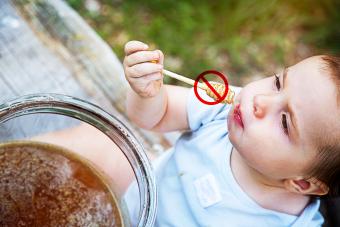
Infant circumcision is a common and simple operation performed for health or religious purposes, and in the post-operative phase infant circumcision care of the surgical site is essential to avoid complications.
Circumcision: Why and How It is Performed
Circumcision is quite simply the removal of the foreskin of the male infant. It is ideally performed soon after birth, before the baby leaves hospital. The reasons for this are to avoid greater pain experiences as the infant grows older.
It is the belief of some parents that the foreskin gives rise to infection. The foreskin can cause susceptibility to urinary infections, and in older males it can increase the risk of sexually transmitted infections. The need to keep the area of the foreskin clean, particularly as the child grows older, is one which can be avoided if circumcision has been performed. Circumcision of Jewish and Moslem infants is not as common as it was 50 years ago; however, many faiths do still carry this out as part of their strict religious beliefs.
The process of circumcision takes a little longer than fifteen minutes. Local anesthetic is applied to the surgical site; a ring called a 'plastibell' is then placed over the foreskin to exclude it in preparation for removal. Once removed the surgeon will apply a liberal amount of petroleum jelly and loose gauze to cover the site and protect from immediate infection risk. In most cases the plastibell remains in-situ and falls off around the same time that the scab does, ten days post-op.
Infant Circumcision Care: An Essential Post-Operative Requirement
In most cases the circumcision site will heal anywhere between seven and ten days. In the first few days the site will be red and sore. This can be made worse by the fact that the area can never be kept dry indefinitely due to the need for the infant to urinate.
On discharge from the hospital, it is then the responsibility of the parents to ensure that the surgical site continues to heal well and remain infection free as a result of adequate infant circumcision care. The following care measures are recommended in every case:
- Hand cleanliness - It is crucial that parents get into good hygiene habits when performing any care to a newborn. Hand-washing before and after delivering any type of care be it changing a diaper or breastfeeding is a good habit to adopt as it reduces the risk of any type of contamination. When dealing with any type of surgical site, it is crucial that thorough attention is paid to hand cleanliness. If a parent is unable to get to access a sink then the use of an anti-bacterial gel or hand solution is an alternative method of ensuring the hands are clean enough to touch the site.
- Change diapers regularly - By doing this, it ensures that the surgical site is not exposed to potential infection due to contact with urine and feces. Although this cannot be avoided indefinitely, avoidance of the risk is essential. Changing a diaper every four hours is a reasonable action.
- Apply Vaseline - This is recommended with each diaper change, particularly within the first 24 hours post-op. The Vaseline provides a water resistant barrier and acts as a protection to the wound. It also moistens the area and avoids the risk of a thick scab forming, as wounds like this can be prone to 'over-granulation' where the area grows a larger than normal scab which is then difficult to remove without causing additional trauma to the wound. After the initial 24 hour period, the dressing can be left off and continued application of Vaseline is recommended.
- Wound cleansing - The use of simple non-perfumed soap and water is recommended to cleanse the area. Best left until day two or three after surgery, a simple wash of the area is all that is required. It is essential to dry the area with a non-abrasive cloth and ensure that the area is entirely dry before applying further Vaseline.
Problems to Watch Out For
If adequate infant circumcision care is carried out, in most cases the wound will heal without any complication. Even with adequate post-operative care, there are occasions when complications occur. Parents should be vigilant and look out for:
- Extensive bleeding - After surgery and for the 24 hours, the site may naturally ooze small amounts of blood. If this extends beyond this period, then medical attention must be sought. If the penis appears to be losing substantial amounts of blood, then this is most certainly not 'normal' and must be treated without delay.
- Evidence of infection - If the wound site appears to be exuding pus-like fluid, then it is likely that infection is present. The pus will normally be yellow or pale green in color and may have an unpleasant odor. If infection is present, then antibiotic therapy will be necessary under the guidance of a pediatrician.
- Pain - For most infants, they will experience a minimal amount of pain in the immediate post-operative phase. Although it is difficult to ascertain if an infant is in pain, parents are likely to be able to assess if their child is crying more than usual, especially if the usual pacifiers do not work. Other signs of pain may be where the infant draws his legs upwards into the fetal position. This is a common feature when pain is present. The pain may be as a result of infection or that the site is not healing as it should. There are additional serious complications of circumcision which all parents ought to be made aware of prior to consenting to the surgery.
- Not passing urine - It is important to watch for wet diapers following surgery. If the baby does not appear to be peeing regularly, or at all, then medical attention must be sought.
Most importantly parents must ensure they are given full post-operative care instructions before leaving the hospital. A contact number should be made available to call if there are any concerns about the wound or general wellbeing of the infant as well.







